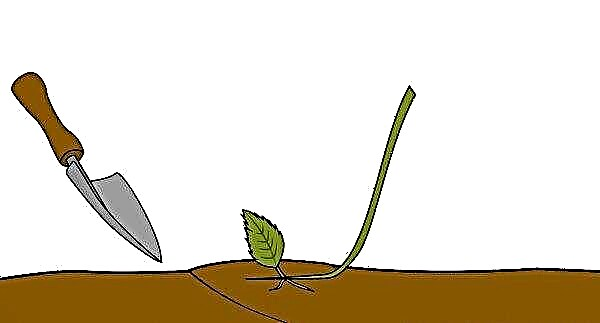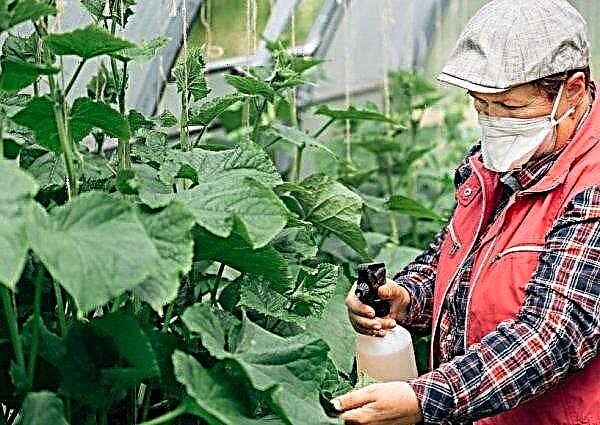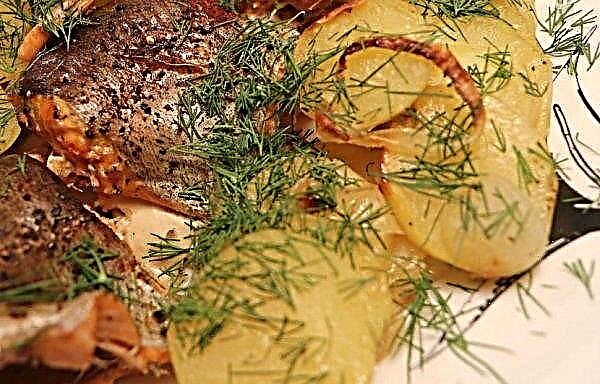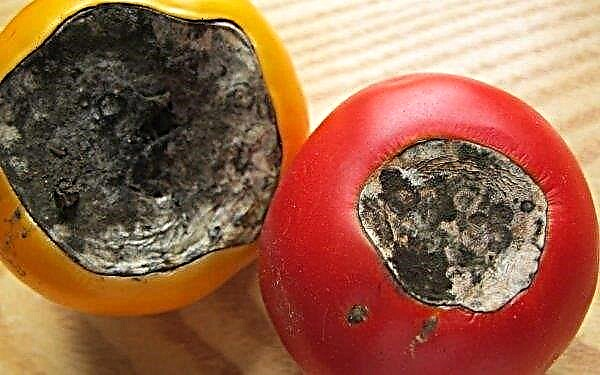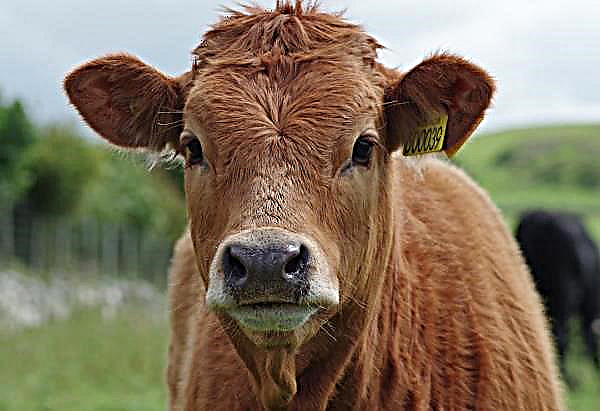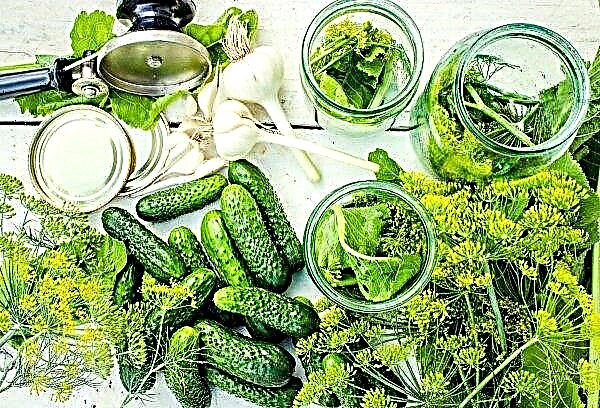Achimeneses will surely be interesting to lovers of decorative-flowering plants, therefore, planting them with a rhizome does not go unnoticed by gardeners. The storage and planting of the culture itself has certain features that are definitely worth considering when growing a flower. What exactly are we talking about and what nuances should be taken into account when planting Achimenes - we will consider further in the article.
What are rhizomes of Achimenes
Achimeneses are perennial, beautifully flowering plants that belong to the Gesneriev family. Like gloxinia, at the end of flowering (in September - October), they need rest, which usually lasts at least two months. The stems of the flower can be either erect or drooping, weakly branching and pubescent.
Did you know? Achimenes is often called by people the “magic flower” or “miraculous lantern”, and for the first time the plant was described back in 1756 (by Patrick Brown) and supposedly began to spread around the world from the southern and central parts of America.
The leaves are dark green in color, moderately pubescent, with a dusty edge. Flowers are single or pairwise, but all are large enough. Their cup is short and narrow, and the corolla has a long graceful tube with a spreading limb. Rhizomes are called the underground part of the plant, that is, the scaly rhizome, which, in fact, is a modified underground stem. All of them resemble small cones 0.5–4 cm long, which serve as the main material for the propagation of this flower.
Rhizomes are called the underground part of the plant, that is, the scaly rhizome, which, in fact, is a modified underground stem. All of them resemble small cones 0.5–4 cm long, which serve as the main material for the propagation of this flower.
When to plant rhizomes of Achimenes
It is better to plant the rhizomes of the described plant in March or April, before the scaly rhizome begins active growth. In the summer, you can propagate the flower with green cuttings, but the spring planting of the rhizome is always considered more preferable.
How to determine the readiness of the rhizome for landing
Not always suitable calendar dates provide the ability to plant rhizomes. Unfortunately, far from all planting material can be used for subsequent successful cultivation of Achimenes, so before performing the procedure, it is worthwhile to select only specimens with a well-formed and sufficiently strong sprout of the apical bud, which is the main sign of their readiness for planting.
In the event that the prepared planting material has grown too much and you are not ready to plant it in a pot, you can slow down the development process by lowering the temperature in the storage to + 10 ... + 12 ° C. However, rhizomes should be kept under such conditions as little as possible, otherwise in the future the plants will grow weakened, with thin and easily breaking shoots. The lower the temperature values at the selected storage location, the later the seedlings will wake up, which means that a few weeks before the intended planting, they will have to be transferred to a warmer room.
However, rhizomes should be kept under such conditions as little as possible, otherwise in the future the plants will grow weakened, with thin and easily breaking shoots. The lower the temperature values at the selected storage location, the later the seedlings will wake up, which means that a few weeks before the intended planting, they will have to be transferred to a warmer room.
Important! In one landing tank, you can plant no more than 10 Rhizomes of Achimenes, however, it all depends on the size of the pot: all specimens should feel free and placed at least 2-3 cm apart from each other. In a regular pot 12-15 cm in diameter 5-6 rhizomes can be placed, and about 15 in a hanging twenty-centimeter pot.
Landing technology
Rhizome planting of Achimenes begins with the preparation of a suitable soil substrate and the pot itself to accommodate planting material. As an optimal variant of the soil mixture, ready-made soil for decorative-flowering house plants can be used, and when choosing a pot, it is recommended to pay attention to wide, but not too deep containers with drainage holes.
The planting process of the described flowers involves the following actions:
- To begin, lay a two-centimeter layer of brick chips on the bottom of the pot (it will act as a drainage).
- Then, to half the total volume, fill the pot with steamed soil mixture and moisten it slightly.
- Lay the prepared rhizomes on the surface and fill them with the remaining soil on top (the surface layer should be no more than 1-2 cm).
- Moisten the substrate again (only so as not to wash the plants) and place the pot on the windowsill or in another well-lit place.
- With further care, young seedlings will need moderate hydration and shading from direct sunlight.
Ahimenes. Rise landing: video
The first sprouts rhizomes appear above the soil about 1.5–3 weeks after planting material is planted.
However, this period largely depends on the level of the initial development of the sprout and the temperature of growing a young plant, so if the time is running out and the green part of the flower still doesn’t appear, try to increase the temperature in the room and increase the regularity of moderate watering, thereby creating almost greenhouse conditions for achimenes.
Important! The rhizome of these domestic plants grows horizontally, so when planting with a rhizome, they need to be placed in the same way. If you deepen the seedlings vertically into the soil, then the germination period of the sprouts may take a little longer.
Rhizome storage rules
The place and method of storage of Achimenes's rhizome depends on the number of copies and personal preferences of the grower. For example, they can be left in the same planting containers in which the plants grew, or removed for storage in another place.
In the first case, it is necessary to remove all the aboveground parts of the plant, and then remove the pot in a dark, relatively cool place without high humidity. The best temperature values for storing the rhizome of the culture will be a temperature of + 10 ... + 18 ° C, and with regard to care, any moisture or top dressing should be excluded.
Throughout the winter period, you will have to periodically check the condition with a riza, controlling their awakening. If sprouts appear above the soil line, you will have to renew the top soil layer, adding fresh and friable substrate. To prevent the emergence of sprouts, you can remove rhizomes from the ground, remove damaged and diseased roots, clean the rhizome of adhering soil and thin roots and dry, after which it remains only to place them in dry, transparent, hermetically sealed bags, overlying each layer with vermiculite, perlite or peat-sand mixture (second storage method).
To prevent the emergence of sprouts, you can remove rhizomes from the ground, remove damaged and diseased roots, clean the rhizome of adhering soil and thin roots and dry, after which it remains only to place them in dry, transparent, hermetically sealed bags, overlying each layer with vermiculite, perlite or peat-sand mixture (second storage method).
In this form, storing the rhizome of Achimenes in the winter is much easier, because they are not only compactly placed, but also much easier to control their condition. When signs of condensation appear, the bag can always be opened and ventilated with rhizomes, which helps to prevent mold.
Did you know? The name of the genus is translated from Greek as “non-tolerable cold (not wintering)”, but in common people you can often find the designation “twisted fruit”, which came from the characteristics of the fruit.
In general, storage and further propagation of Achimeneses with the help of a rhizome will not be difficult, both for an experienced and a beginner grower. Therefore, if you do not know which flowering plant to prefer, pay attention to the described flower.

